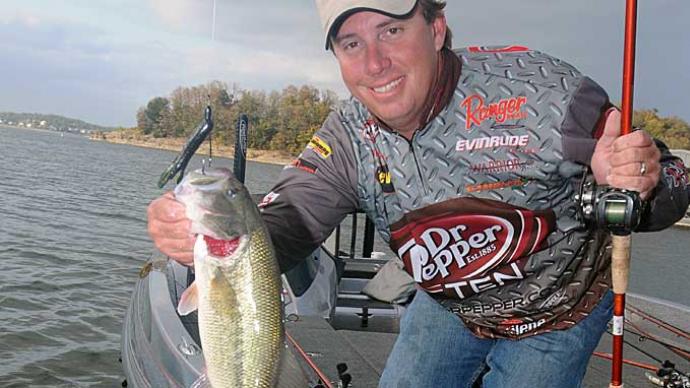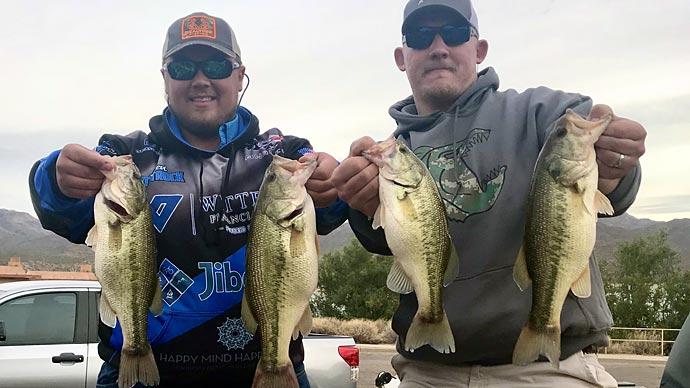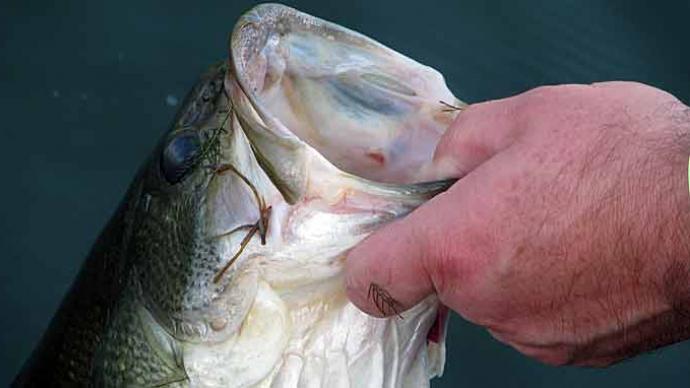The following is an excerpt from "Raising Trophy Bass," the new POND BOSS handbook by biologist Bob Lusk.

One 50-acre impoundment in Texas called Pinto Valle Lake produced excellent spawns of bass, with no survival of young. The bass population ranged in size from eight to 10, and every fish was 20-to-30 percent underweight.
The forage base was empty. No bluegill, no shiners, no nothing. Reason: The lake had too many bass, too little food. The bass could not grow. To survive, the bass leaped from the water to catch dragon flies. On any summer evening, just before dark, people would drive to the lake and set up their lawn chairs, just to watch the bass jump for insects. This makes for cheap entertainment, but poor growth-rates for largemouth.
The answer? Harvest, harvest, harvest.
The order of the day was to remove each bass caught. Ranch owners and guests learned every possible way to catch bass, then serve them for dinner, for lunch, for breakfast. The landowners and their visitors ate bass until the world looked level.
While the lake owner and his clan reaped bass, we stocked 2,500 adult bluegill to create the basis for a food chain. We started a fertilization program, and monitored the water visibility weekly because of heat and drought conditions.
After six months of aerobic exercise hyper-fishing, Pinto Valle anglers extracted more than 1,000 small bass. Mean while, the bass were showing no signs of growing. None, nada, zero.
At the end of the first year, the team had removed 1,500 bass, watched two bluegill spawning seasons pass. The bass were not yet gaining weight, but Kenny Dryden and his buddies saw a ray of hope when young-of-the-year bluegill showed up in the annual population survey.
Only then did we see some actual progress. By midsummer 1984, bass were growing, heavier and longer. By the end of 1984, two years into the project, Kenny and his troops had removed more than 2,000 small bass. The also caught their first two-pounder.
About that time, we imposed a "slot limit" in place of the keep-'em-all philosophy. Bass from 12 inches to infinity were released. Any fish shorter than 12 inches was removed and escorted to the frying pan.
By the middle of 1985 bass were gaining significantly. The lake record was six pounds. Bass and bluegill ranged in size from finglerlings to adults, an indicator the lake was becoming balanced.
In late 1985, Florida bass from another lake were transferred to the Pinto Valle. These young Floridas, only 18 months old, were already pushing 2 1/2 pounds. Large enough to eat the smaller Pinto Valle bass. These fast-growing young bully predators would help fishermen harvest small bass.
Annual surveys showed overall average weights began to increase only after 2,000 fish had been removed. Then, results really started gaining momentum.
By mid-1986 the lake record was a football-shaped 8-pound monster. Seasoned anglers hooked several bass pushing 10 pounds they simply could not land.
Ranch owners had harvested 3,000 small bass by late 1987. The annual survey showed more than 30 percent of remaining bass were three pounds and up.
It was time to remove the slot limit and go to catch and release. To round out the food chain, we stocked threadfin shad.
The bass responded by pigging out and growing fast.
By 1988, five years after the pond owner started work, the lake record was 12 pounds. The landowner had a trophy bass lake on his hands.
You, too, can follow the same recipe to success.
To order a copy of "Raising Trophy Bass," send $19.95, plus $3.05 shipping (Texas residents add $1.90 for sales tax, total $24.40) to: Pond Boss, POB 12, Sadler, TX 76264.
Reprinted with permission from Pond Boss Magazine



